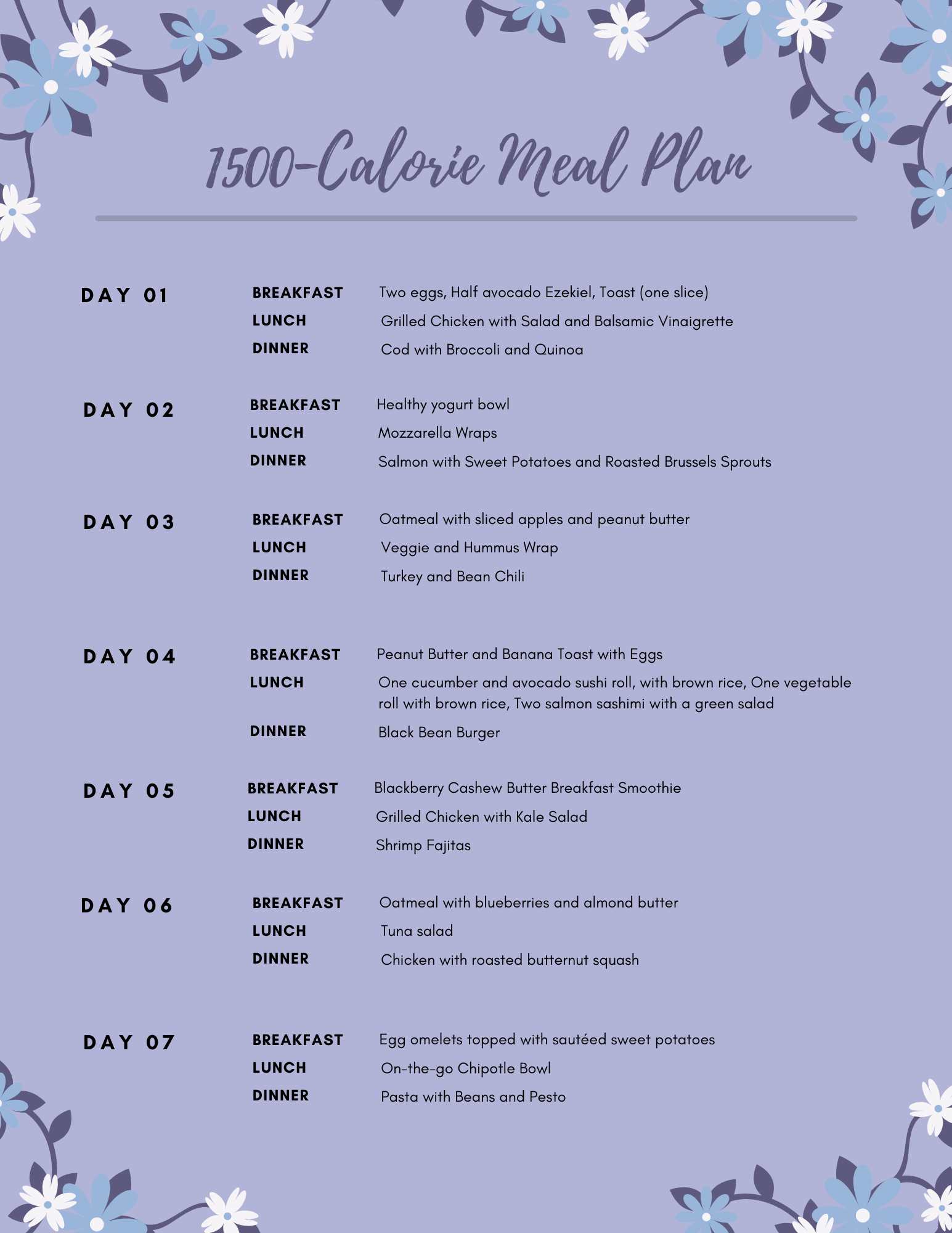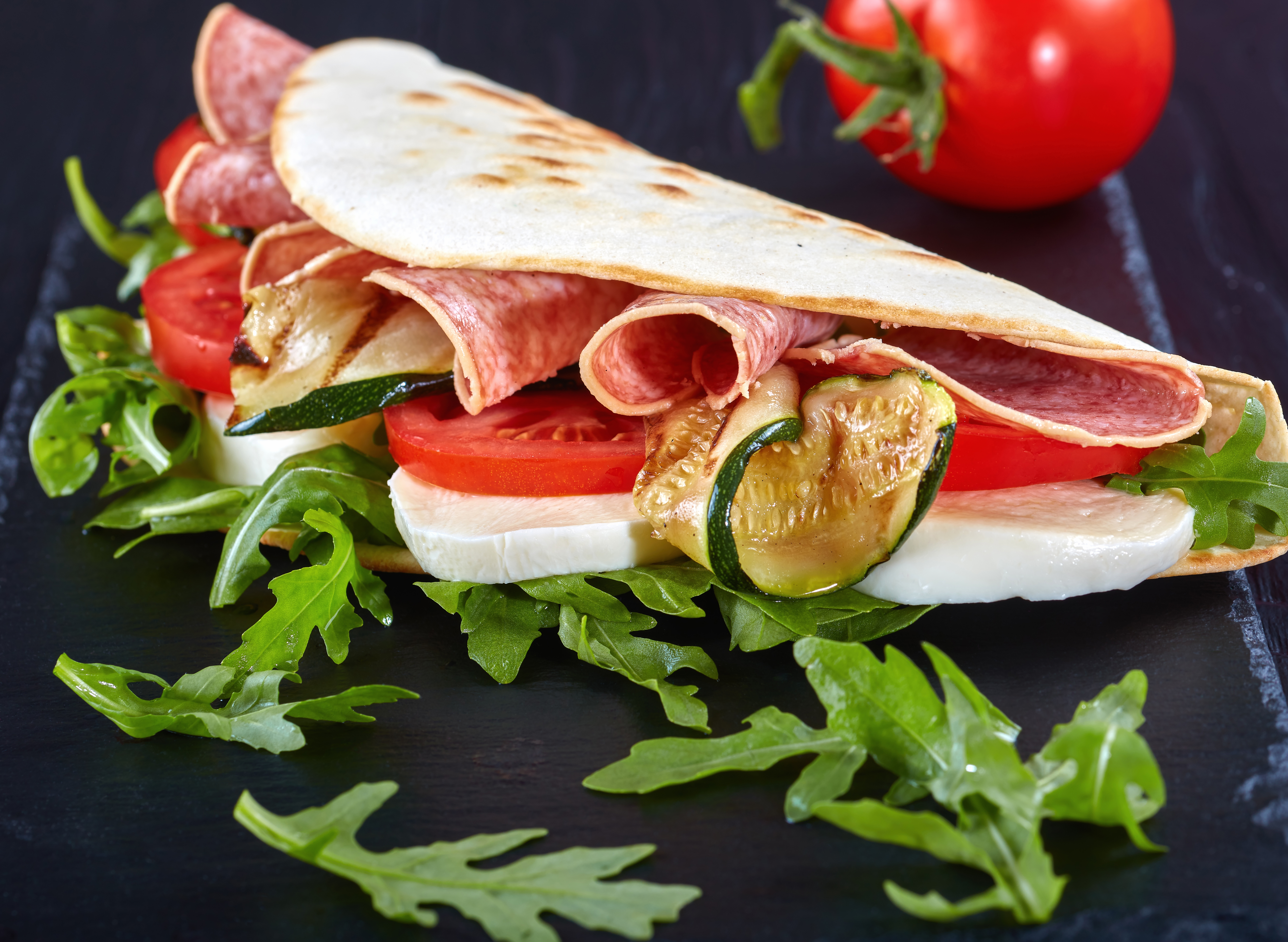You don’t need to panic about excessive weight gain because you love eating. With our 1500-calorie diet plan, you can maintain a healthy lifestyle while keeping your plates filled with delicious foods. Having a meal plan that balances the line between healthy and tasty can be tricky. But here, you’ll find a handy guide on how to do it, what to avoid, and a handy shopping list to get you going.
This meal plan includes a wide array of whole foods like grains, fish, lean meat, vegetables, and eggs. You’ll also find some dairy products of both full-fat and reduced-fat varieties in the diet plan. Legumes and fruits aren’t left out, of course, as well as nuts and seeds. But note that this calorie level is expressed for average cases, and you need to be sure it fits your lifestyle before employing it.
It’s always advised that you calculate your calorific needs before engaging in a diet plan. And while this one may work for those on sedentary to moderately active lifestyles, rigorously busy people may need more calories. So, it’s best first to calculate your total daily energy expenditure (TDEE) before you adopt this plan.
This diet plan is excellent for weight loss programs, as the set calorie level is a minimum for most lifestyles. With it, paired with some exercise, you can push your body to a weekly weight shed of one to two pounds! Plus, the recipes in the plan are adaptable and can fit vegan, keto, and gluten-free requirements. Also, the rich combination of whole grains, fruits, vegetables, and proteins ensures a constant supplication of essential vitamins and minerals. And at its calorie value, the intake of carbs is significantly reduced, meaning you can adequately manage blood sugar with the meal plan.
Meal plan
Day 1
Breakfast
- Two eggs
- Half avocado
- Ezekiel Toast (one slice)
Lunch
- Grilled Chicken with Salad and Balsamic Vinaigrette
Dinner
- Cod with Broccoli and Quinoa
Day 2
Breakfast
- Healthy yogurt bowl
Lunch
- Mozzarella Wraps
Dinner
- Salmon with Sweet Potatoes and Roasted Brussels Sprouts
Day 3
Breakfast
- Oatmeal with sliced apples and peanut butter
Lunch
- Veggie and Hummus Wrap
Dinner
- Turkey and Bean Chili
Day 4
Breakfast
- Peanut Butter and Banana Toast with Eggs
Lunch
- One cucumber and avocado sushi roll, with brown rice
- One vegetable roll with brown rice
- Two salmon sashimi with a green salad
Dinner
- Black Bean Burger
Day 5
Breakfast
- Blackberry Cashew Butter Breakfast Smoothie
Lunch
- Grilled Chicken with Kale Salad
Dinner
- Shrimp Fajitas
Day 6
Breakfast
- Oatmeal with blueberries and almond butter
Lunch
Dinner
- Chicken with roasted butternut squash
Day 7
Breakfast
- Egg omelets topped with sautéed sweet potatoes
Lunch
- On-the-go Chipotle Bowl
Dinner
Extra tips
- Be sure to focus on whole foods for this meal plan, and avoid processed items in your recipe.
- If you plan on having specific recipes throughout the plan period, prepare a large batch and keep the excess in leftover containers in the fridge.
- This meal plan helps revive your eating habits to a healthy tone. As such, try to avoid fast foods and packaged foods.
- Refined carbs like white pasta, bagels, white bread, and tortillas are calorie-dense and upset the current balance. So, omit them from your diet during this period.
- For the best control of blood sugar, stay off foods with added sugars or sweeteners, like candy bars.
- While ingredients like BBQ sauce, soy sauce, and ketchup tend to be tasty, they also contain hidden amounts of carbs. So, if you must use them, look for the zero-carb varieties instead.
- You also need to keep the calorie level at the approved number. As such, omit fried foods like potato chips and doughnuts as these tend to be packed with carbs.
- If, at some point, you can’t entirely cut these foods off, take them at the barest minimum. Try to put them as in-between snacks from time to time. But be sure to calculate the extra added calories and cut them from the total daily meal plan.
- You can consume beverages during this meal plan, so long as they aren’t sweetened. As such, consider unsweetened tea, coffee, or stick with water.
- It’s okay to use herbs and spices and spices for recipes in this meal plan, so long as it’s in minuscule amounts. As such, you can consider options like garlic, turmeric, chili pepper, black pepper, ginger, oregano, rosemary, and others.
- It’s best to avoid seasoning powders as most options tend to contain extra calories. But if you must, ensure it’s as natural as possible.
- If you’re sensitive to gluten, be sure to check the ingredients you purchase for it. Though most items listed in the shopping list are gluten-free, it doesn’t hurt o be double-sure. And if you find any, proceed to replace it with its zero-gluten counterpart.
| Meat and Fish | Fruits | Grain and Grain Products | Vegetables and Legumes | Milk and Dairy | Seeds, Nuts, and Nut Products | Others |
| Chicken | Avocado | Ezekiel bread | Spinach | Goat cheese | Almonds, sliced | Balsamic vinegar |
| Salmon, wild-caught | Raspberries | Quinoa | Chickpeas | Full-fat plain yogurt | Unsweetened coconut | Olive oil, extra-virgin |
| Ground turkey | Apples | Whole-grain wrap | Carrots | Mozzarella | Natural peanut butter | Pesto |
| Salmon sashimi | Bananas | Oatmeal | Broccoli | Butter | Cashew butter | Cinnamon, ground |
| Tuna, canned | Blackberries | Brown rice | Sweet red peppers | Almond milk, unsweetened | Hemp seeds | Eggs |
| Barbacoa chicken | Blueberries | Breadcrumbs | Tomatoes | Muenster cheese | Natural almond butter | Pea protein powder, organic |
| Shrimp | Corn tortillas | Brussels sprouts | Feta cheese | Chia seeds | Guacamole | |
| Whole-wheat pasta | Hummus | Coconut milk | Salsa | |||
| Arugula | Full-fat sour cream | |||||
| Black beans | Mayonnaise | |||||
| Kidney beans | Cheddar cheese | |||||
| Onions | Parmesan cheese | |||||
| Garlic | ||||||
| Mixed greens | ||||||
| Kale | ||||||
| Lentils | ||||||
| Cherry tomatoes | ||||||
| Peppers | ||||||
| Crushed tomatoes | ||||||
| Celery | ||||||
| Butternut squash | ||||||
| Sweet potatoes | ||||||
| Romaine lettuce | ||||||
| Cannellini beans |
You can keep healthy and eat your fill with this 1500-calorie diet plan. This collection of rich foods and healthy ingredients are a sure way to keep your body refreshed while adjusting to a healthy eating habit. And not only will you experience an admirable reduction in weight, but your body won’t feel starved throughout the process.

